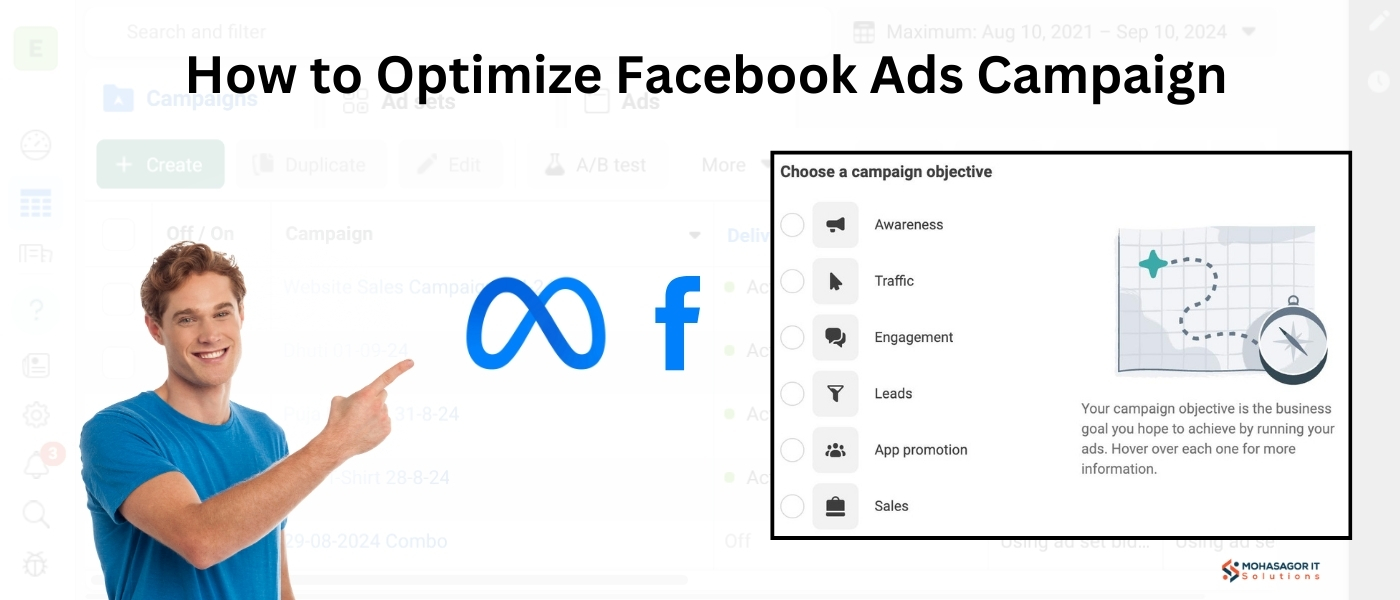
Facebook Ads remain one of the most effective tools for reaching your target audience and driving conversions. However, simply setting up a campaign isn’t enough to ensure success. To truly harness the power of Facebook Ads, you need to continuously optimize your campaigns to achieve the best results. This comprehensive guide will walk you through the essential steps for optimizing your Facebook Ads campaign, from setting clear objectives to analyzing performance data.
Before diving into the nitty-gritty of optimization, it's crucial to start with clear, measurable objectives. Your goals will guide your campaign’s strategy and metrics for success. Facebook Ads offers several objectives based on your business needs, such as:
Facebook Ads optimization starts with precise audience targeting. Facebook provides a variety of targeting options:
Tip: Regularly review and refine your audience settings based on campaign performance and evolving business goals.
The ad creative includes your images, videos, headlines, and ad copy. Effective ad creative captures attention and drives action. Consider the following:
Tip: A/B test different ad creatives to determine which performs best. Monitor metrics like click-through rate (CTR) and conversion rate.
Facebook Pixel is a powerful tool for tracking user interactions on your website. By installing the Pixel, you can:
Tip: Regularly check your Facebook Pixel’s implementation to ensure it’s tracking correctly.
Facebook offers multiple placement options, including Facebook News Feed, Instagram Feed, and Audience Network. To optimize placements:
Tip: Monitor performance across different placements. Allocate more budget to the placements delivering the best results.
Budget management is crucial for Facebook Ads Optimization campaign. Consider these strategies:
Tip: Start with a smaller budget to test different strategies and scale up once you identify what works best.
Regular monitoring and analysis are key to facebook ads optimization. Use Facebook Ads Manager to track:
Tip: Set up custom reports and dashboards to easily track metrics relevant to your campaign goals.
Optimization is an ongoing process. Use the data from your performance analysis to make informed adjustments:
Facebook frequently updates its algorithm and ad policies. Staying informed about these changes can help you adapt your strategies accordingly. Regularly check Facebook’s official resources and industry news to stay ahead.
Continuous testing and iteration are fundamental to campaign of facebook ads optimization. Regularly experiment with new ad formats, audience segments, and creative elements. Use A/B testing to compare different strategies and learn what works best.
Tip: Implement a structured testing plan and document results to build a knowledge base for future campaigns.
Campaign of Facebook Ads Optimization involves a combination of strategic planning, precise targeting, compelling creative, and ongoing analysis. By setting clear objectives, leveraging Facebook’s tools, and continuously refining your approach based on performance data, you can maximize the effectiveness of your ads and drive better results for your business. Remember, the key to successful Facebook advertising lies in staying adaptable and responsive to both data and platform changes. Happy optimizing